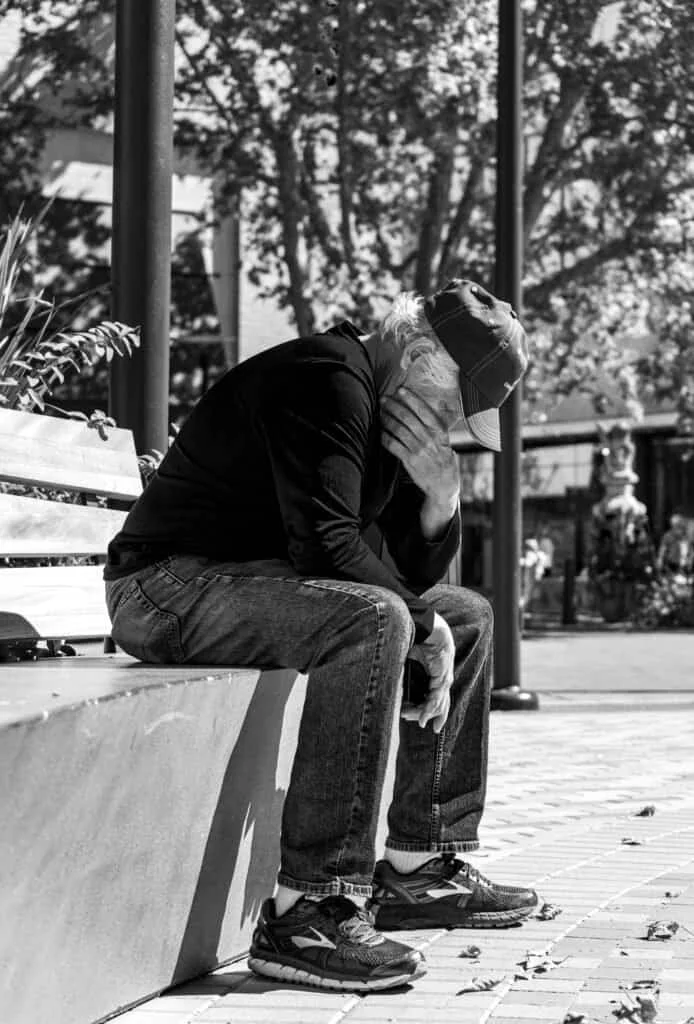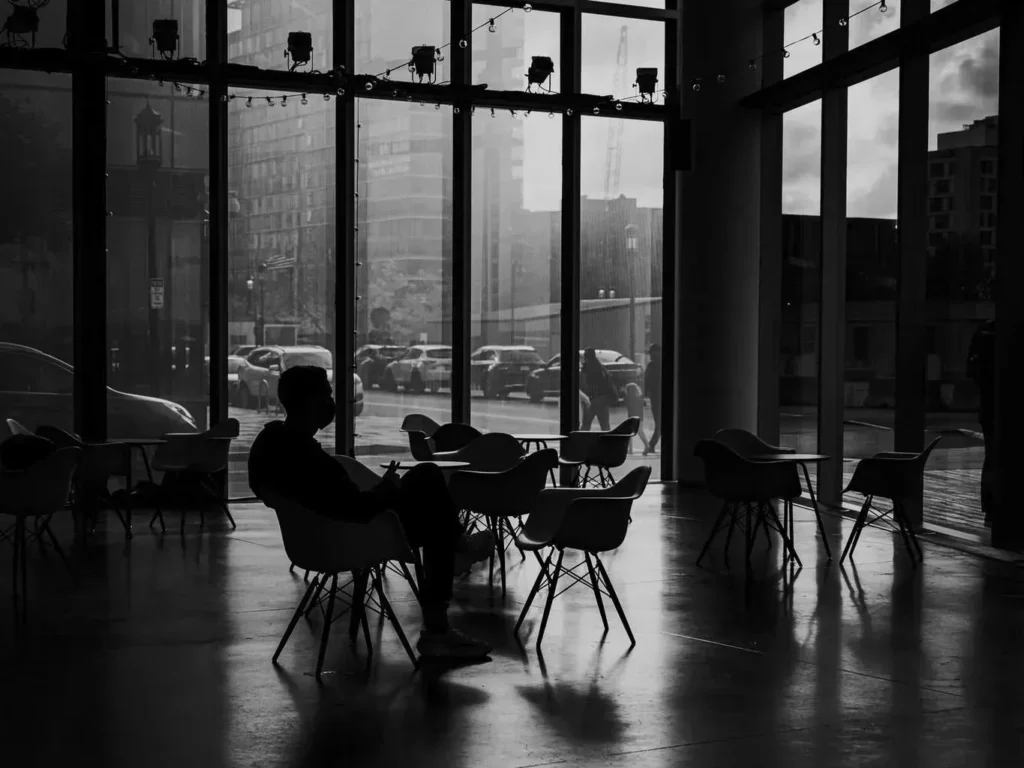So, you’re wondering whether the 70s can be classified as vintage, huh? Well, let’s take a closer look at this intriguing question. The era of bell-bottoms, disco fever, and flower power certainly holds a special place in our collective memory. But does that automatically make it vintage? Let’s explore the characteristics that define this term and see if the groovy 70s fit the bill.

This image is property of images.unsplash.com.
Understanding the term ‘Vintage’
Definition of vintage
Vintage, in general, refers to something that is old or from the past, particularly items that are at least 20 years old. In the context of fashion and design, vintage specifically refers to clothing, accessories, or even furniture that dates back to previous decades. These items evoke nostalgia and are often considered valuable due to their historical significance and unique character.
Origins and use of the term
The term “vintage” originated from the winemaking industry, where it was used to describe the year in which a particular wine was produced. Its usage gradually extended to other areas, including fashion. The fashion industry adopted the term to categorize and identify old garments that had a certain appeal and charm.
Varieties in perception of vintage
The perception of vintage can vary among different individuals and communities. Some people associate vintage items with elegance, quality craftsmanship, and a sense of timelessness. They appreciate the aesthetic and historical value of these pieces. On the other hand, some may view vintage as outdated or old-fashioned, preferring modern styles instead. The perception of vintage can also vary depending on personal taste, cultural preferences, and fashion trends.
Vintage in Fashion Industry
Historical context of vintage fashion
Vintage fashion has a rich historical context that spans several decades. It reflects the changing societal norms, cultural influences, and artistic movements of the time. Each decade has its distinct fashion trends and styles, showcasing the evolution of clothing and design throughout history. Vintage fashion allows us to immerse ourselves in the past and understand the fashion choices of different eras.
Why vintage fashion is popular
Vintage fashion has gained popularity for several reasons. Firstly, it offers a sense of individuality and uniqueness, allowing people to showcase their personal style. Vintage pieces are often one-of-a-kind and cannot be replicated. Secondly, vintage fashion is seen as a form of sustainable fashion. By purchasing and wearing vintage garments, people can reduce waste and promote sustainable living. Lastly, vintage fashion has a nostalgic and sentimental value. It allows individuals to connect with the past, relive memories, and appreciate the craftsmanship and artistry of bygone eras.
Influence of vintage fashion on modern designs
Vintage fashion has had a significant influence on modern designs. Many fashion designers draw inspiration from vintage styles and incorporate them into their collections. Vintage elements such as high-waisted trousers, floral prints, and oversized sunglasses often make a comeback on contemporary runways. The fusion of vintage and modern fashion creates a unique and fashionable twist that appeals to a wide range of audiences. Vintage fashion has proved to be a timeless source of inspiration for the fashion industry.
Classification of Vintage Periods
Evolution of vintage classifications
The classification of vintage periods has evolved over time as fashion trends and historical perspectives have changed. Initially, vintage referred to items from the Victorian and Edwardian eras. However, as time went on, the scope of vintage expanded to include the 1920s to the 1980s. With the passing of each decade, new classifications emerged, often influenced by popular culture and societal shifts. Vintage classifications now encompass a broader range of time periods, allowing for a more comprehensive understanding of fashion history.
Decades considered as vintage
While the exact decades considered as vintage may vary, the general consensus is that pieces dating from the 1920s to the 1980s are considered vintage. Each decade within this range has its defining fashion characteristics and aesthetic, allowing for a diverse range of vintage options. The 1920s were known for flapper dresses and art deco influences, while the 1960s were marked by mod fashion and psychedelic prints. Beyond the 1980s, items are often categorized as retro rather than vintage due to their more recent origin.
Overlap between vintage and retro
There is often an overlap between the terms vintage and retro, leading to some confusion. While vintage refers to items from a specific era, retro refers to new items that imitate or are inspired by styles from the past. Retro pieces are designed to evoke nostalgia and capture the essence of a certain era, but they are not necessarily old or authentic. Vintage, on the other hand, refers to original items from the past and carries historical value.
What Makes 70s Fashion Distinct
Popular clothing styles in the 70s
The 1970s gave rise to several iconic clothing styles that continue to influence fashion today. One of the most notable styles of the decade was disco fashion, characterized by flamboyant outfits, glittering sequins, and platform shoes. Bell-bottom pants were also highly popular during this time, often worn with flowy tops and bold patterns. Hippie fashion from the late 60s carried over into the 70s, with flowing maxi dresses, fringe details, and bohemian influences.
Famous fashion icons of the 70s
The 70s produced numerous fashion icons who left a lasting impact on the industry. One of the most influential figures of the decade was singer and actress Cher, known for her daring and eclectic style. Cher’s bold fashion choices, such as bell-bottom jumpsuits and feathered headdresses, epitomized the vibrant and unconventional spirit of the 70s. Other notable fashion icons of the era include Farrah Fawcett, Diana Ross, and Jane Birkin, who each brought their unique flair to the fashion scene.
Socio-cultural influences on 70s fashion
The fashion of the 70s was heavily influenced by the socio-cultural climate of the time. The 1960s had witnessed significant social and political transformations, and these influences spilled over into the next decade. The civil rights movement, women’s liberation, and the sexual revolution all shaped fashion trends and encouraged self-expression. The rise of disco culture and the popularity of music genres like funk and soul further influenced fashion choices, with bold colors, metallic fabrics, and exaggerated silhouettes becoming prevalent.

This image is property of images.unsplash.com.
70s Fashion Regarded as Vintage
Making the case for 70s as vintage
The 1970s is widely regarded as a vintage era due to its significant contributions to fashion history. The distinctive styles and cultural influences of the decade make it a valuable period to study and appreciate. The fashion of the 70s encapsulates the free-spirited nature of the time, marked by experimentation, individuality, and a rejection of traditional norms. The clothing and accessories from this era hold a particular allure for fashion enthusiasts, collectors, and vintage lovers.
Opposing views on considering 70s as vintage
While many embrace the 70s as a vintage period, there are differing opinions on whether it truly qualifies. Some argue that the 70s are still relatively recent and do not possess the same level of historical significance as earlier decades. They believe that true vintage should be limited to items from the mid-20th century or earlier. Additionally, others contend that the term “vintage” should be reserved for high-end or designer pieces, rather than everyday clothing from the 70s.
Several merits and demerits of classifying 70s as vintage
Classifying the 70s fashion as vintage has both merits and demerits. On the positive side, embracing the 70s as vintage allows for a more inclusive and diverse understanding of fashion history. It recognizes the cultural impact and enduring relevance of the decade’s styles. However, some may argue that the broad classification of the 70s as vintage dilutes the term’s significance. It may also lead to potential confusion, as more recent clothing is categorized alongside items with greater historical value.
Key Features of 70s Vintage Fashion
Characteristic prints and patterns
The 70s were known for their bold and vibrant prints and patterns. Psychedelic motifs, paisley designs, and floral patterns were prevalent during this era. These eye-catching prints and patterns added a whimsical and expressive element to clothing, reflecting the era’s emphasis on individuality and self-expression.
Clothing types and accessories iconic to the 70s
Several clothing types and accessories are iconic to the 70s. Bell-bottom pants were a staple of 70s fashion, featuring a flared shape that widened towards the ankle. Maxi dresses, with their flowing silhouettes and bohemian aesthetic, were also popular. Other notable trends included platform shoes, wide-brimmed hats, long fringe details, and oversized sunglasses. These distinct clothing types and accessories contribute to the recognizability and charm of 70s vintage fashion.
Color schemes of the 70s
The color schemes of the 70s were diverse, ranging from earthy tones to bright, bold hues. Earthy browns, oranges, and yellows were often used in combination with mustard and avocado greens, reflecting the nature-inspired color palette popular during the era. On the other end of the spectrum, disco and glam-inspired fashion embraced metallics, glitter, and vibrant shades such as electric blue and hot pink. The contrasting color schemes of the 70s allowed for a wide array of fashion expressions that continue to inspire designers today.

This image is property of images.unsplash.com.
Revival of 70s Fashion
Modern fashion inspired by the 70s
The influence of 70s fashion can be seen in contemporary designs and trends. Many fashion houses and designers draw inspiration from the distinctive styles of the era and incorporate them into their collections. Elements such as wide-legged pants, jumpsuits, and bohemian dresses continue to be popular choices for fashion-forward individuals. The fusion of modern silhouettes and retro-inspired details creates a unique and nostalgic aesthetic that appeals to a broad audience.
Retro and vintage boutiques selling 70s fashion
Retro and vintage boutiques play a significant role in the revival of 70s fashion. These specialty stores offer curated selections of authentic vintage garments from various eras, including the 70s. By providing access to genuine vintage pieces, these boutiques contribute to the preservation of fashion history and the continued popularity of 70s fashion. They serve as treasure troves for fashion enthusiasts seeking to embrace the unique style and character of the decade.
High street and haute couture taking cues from 70s fashion
Both high street and haute couture fashion have embraced the influence of the 70s. High street brands create affordable and accessible pieces inspired by 70s silhouettes, colors, and prints. Designers on the haute couture scene often incorporate 70s elements into their runway collections, infusing them with modern trends and luxurious fabrics. The appreciation for 70s fashion transcends socio-economic boundaries, making it accessible to a wide range of fashion consumers.
Collecting 70s Vintage Fashion
How to identify genuine 70s vintage pieces
Identifying genuine 70s vintage pieces requires knowledge and attention to detail. Key characteristics to look for include specific silhouettes and styles that were prevalent during this era. Researching and familiarizing oneself with 70s fashion trends, brands, and labels can aid in distinguishing authentic vintage pieces from more recent imitations. Vintage clothing tags, fabric composition, and construction techniques are additional indicators of authenticity. Consulting with experts or experienced vintage collectors can also be helpful.
Top tips for storing and maintaining vintage clothes
Proper storage and maintenance are essential for preserving the quality and longevity of vintage clothes. Storing vintage garments in a cool, dark, and dry environment helps to prevent damage from sunlight, moisture, and pests. Hanging delicate pieces on padded hangers or storing them flat in acid-free tissue paper can minimize creasing and stretching. It is crucial to handle vintage clothing with care, avoiding exposure to harsh chemicals and overly frequent laundering. Seeking advice from preservation professionals can provide valuable insights on maintaining vintage clothing.
Value and pricing of vintage items
The value and pricing of vintage items can vary depending on several factors. Rarity, condition, and desirability all contribute to the perceived value of vintage pieces. Designer labels, iconic styles, and celebrity associations can significantly increase the price of vintage items. Additionally, the vintage market is influenced by trends and demand, affecting pricing fluctuations. Professional vintage appraisals and consultations with reputable dealers can guide individuals in determining the value and authenticity of their vintage finds.
Sustainability and Vintage Fashion
Role of vintage fashion in sustainable living
Vintage fashion plays a vital role in sustainable living and combating the negative environmental impact of the fashion industry. By opting for vintage garments instead of buying new, individuals reduce the demand for fast fashion, which often leads to overconsumption and waste. Vintage pieces are inherently sustainable as they promote reuse, recycling, and extension of the clothing lifecycle. By embracing vintage fashion, individuals actively contribute to the reduction of their carbon footprint and support ethical and eco-conscious choices.
Thrifting and second-hand as an alternative
Thrifting and second-hand shopping have gained popularity as sustainable alternatives to fast fashion. Thrift stores, consignment shops, and online platforms provide access to affordable vintage and pre-loved clothing. These platforms offer a wide range of styles and eras, including the 70s. Thrifting allows individuals to explore unique fashion choices while actively participating in the circular economy. By extending the life of clothing through thrifting, individuals reduce waste and positively impact the environment.
Bridging the gap between fashion and sustainability via ‘Vintage’
The concept of ‘Vintage’ serves as a bridge between fashion and sustainability. Vintage fashion embodies the rich history, creativity, and craftsmanship of past eras. By nurturing an appreciation for vintage, individuals develop a more sustainable mindset towards fashion. The act of embracing vintage encourages conscious consumption, encourages recycling, and fosters creativity through repurposing garments. Viewing vintage as an integral part of the fashion landscape helps bridge the gap between current trends and sustainable practices.
Conclusion: The 70s as a Vintage Decade
Summarizing the features of 70s vintage fashion
The fashion of the 70s was characterized by distinctive prints, styles, and color schemes. Bold patterns, iconic silhouettes, and a wide range of clothing types and accessories define the 70s vintage fashion. With its psychedelic prints, platform shoes, and bohemian dresses, the 70s exuded a sense of freedom, individuality, and self-expression. These features continue to inspire fashion trends and styles today.
Significance of 70s in vintage fashion timeline
The 70s hold immense significance in the vintage fashion timeline. The decade marked a shift towards more inclusive, diverse, and experimental fashion choices. The cultural influences and social changes of the time shaped the fashion landscape, leaving a lasting impact on subsequent eras. The popularity and recognition of 70s vintage fashion highlight its enduring relevance and cultural importance.
Predictions for the future of vintage fashion
As sustainability becomes a growing concern, vintage fashion is predicted to continue gaining popularity in the future. The appreciation for the uniqueness, quality, and historical value of vintage will persist, leading to an increased demand for vintage pieces. The fashion industry will likely continue to draw inspiration from past eras, incorporating vintage elements into contemporary designs. Vintage fashion will remain an essential part of the fashion landscape, ensuring the preservation and celebration of fashion history for generations to come.
